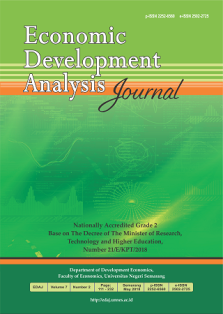Youthful or Aged: Exploring Age Dependency Ratios and Inflation Trends in ASEAN Countries
Abstract
There has been a growing interest to understand inflation through demographic lens using a critical key indicator known as the dependency ratio. However, studies investigating this nexus in terms of ASEAN nations are limited, despite ASEAN undergoing a demographic transition. Therefore, this paper aims to investigate the impact of age-population ratio on the inflation rate across 8 ASEAN countries during 2000-2020. This research uses Feasible Generalized Least Squares (FGLS) estimation, as it is robust to groupwise heteroskedasticity, serial and cross-sectional correlations. The result reveals that population aging is deflationary. However, the elderly dependence successfully explains the price dynamic after controlled by monetary and macro variables. It means that aging matters for inflation along with the macro variables dynamic. In addition, the analysis also sheds light on the impacts of the young dependency, which does not significantly impact the inflation rate when macro variables are taken into account. This research also underlines the importance of considering demographic dynamics in the future monetary policy decisions.


